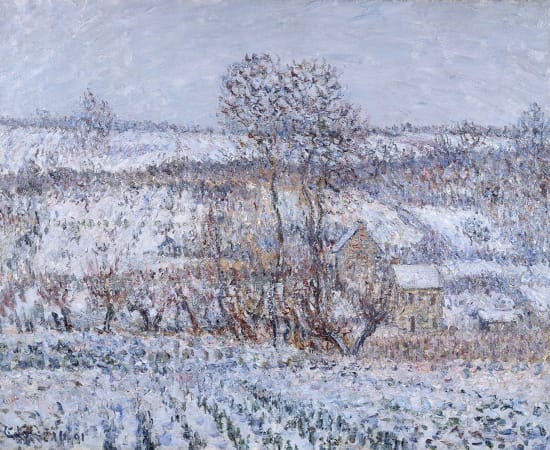Gustave Loiseau (1865-1935) French
Works
Biography
Gustave Loiseau (French, 1865-1935) was born in Paris. He was first apprenticed to a decorator, a job he very much disliked. It was only in 1887 that an inheritance from his grandmother presented an opportunity to fulfil his aspiration to become a painter. After he had finished military service, he gave up his job and dedicated his life to painting.
His formal training took place at the Ecole des Arts Decoratifs in Paris, and afterward, he joined the landscape artist Fernand (Just) Quignon (French, 1854-1941) in his studio in 1889. Even though Loiseau was fascinated by Quignon's airy paintings, he was disillusioned by his method of painting a canvas from sketches in his studio. For Loiseau, it was totally implausible that a canvas should not be painted directly from the subject, en plein air.
Seeking a location where he could concentrate on his love of landscape painting, Loiseau travelled to the village of Pont-Aven in Brittany, a well-known artist colony. There, he met Henry Moret, Maxime Maufra, and other artists of the Pont-Aven School. He also learned a great deal from Paul Gauguin (French, 1848-1903) who had returned to Pont-Aven in 1890 from his first trip to Tahiti; but Loiseau?s early work was mainly influenced by Camille Pissaro (French, 1830-1903) and Alfred Sisley.
After a period of experimentation with Pointillism, Loiseau found his own vision of rural France. His canvases reveal an interest in creating a more melancholic vision, avoiding the intense light found in the work of the Impressionists. A renewed aesthetic sense characterized the stylistic path for expression, portraying the world not just according to its physical appearance, but by its inner realities. Loiseau looked at nature with extraordinary sensitivity, defining structure and form with short brushstrokes of broken color, which places him firmly within the Post-Impressionism movement.
Loiseau returned to Paris, and first exhibited at the Salon des Independents in 1893. The leading art collector and primary patron of the Impressionists, Paul Durand-Ruel, put the artist under his contract in 1894. This success enabled Loiseau to travel extensively to discover different regions of France, spending summers in Normandy, Brittany, and occasionally, the Dordogne, and returning in winter to the Isle-de-France. His paintings are faithful witnesses of his travels.
In his later years, he divided his time between his studio in Pontoise and a new studio in Paris. He painted a series of works of the capital city, and it was there that he died in 1935.
From the end of the 19th century, Loiseau enjoyed great international success, with patrons in the United States and in Europe collecting his work. His paintings are represented in numerous museums, private collections, and important galleries in Paris, the Thyssen-Bornemisza in Madrid, and The Metropolitan Museum of Art in New York.
Enquire



